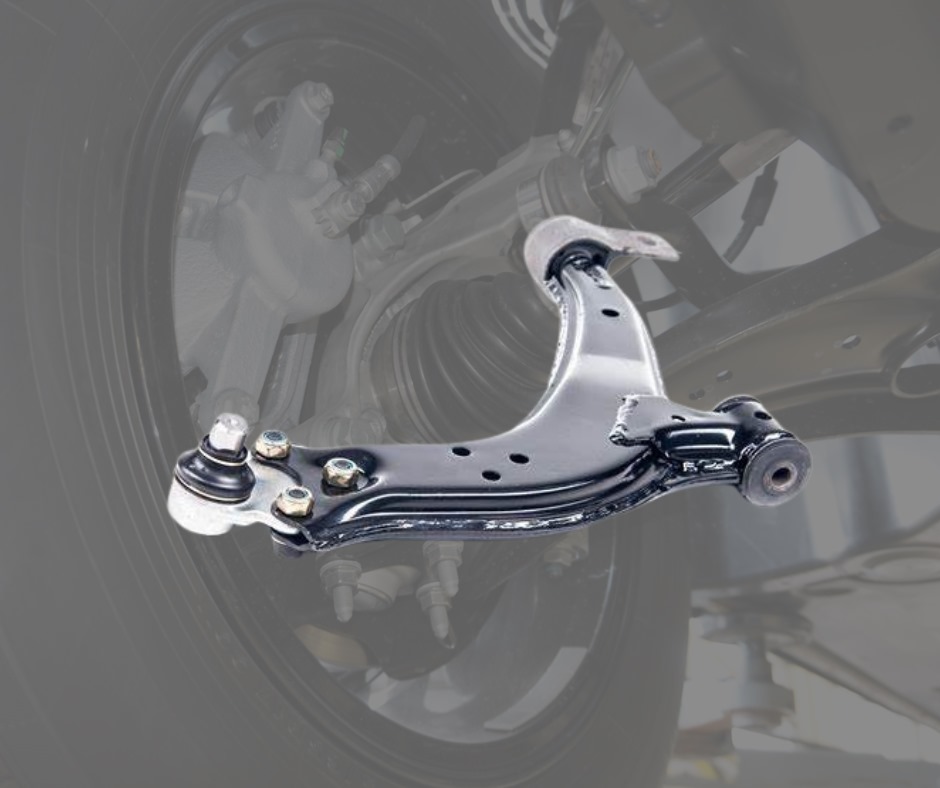Signs It's Time to Replace Your Control Arms

Discover the critical signs that your vehicle's control arms may need replacement for a smoother and safer ride.
Understanding the Role of Control Arms in Vehicle Stability
Control arms are pivotal components of a vehicle's suspension system, connecting the chassis to the wheel hub and enabling the wheels to move up and down independently. They play a crucial role in maintaining stability and handling, ensuring a comfortable ride by absorbing road irregularities and contributing to proper wheel alignment. Understanding their function is the first step in recognizing when they may need replacement.
The integrity of control arms directly affects the steering and overall safety of the vehicle. They typically consist of bushings and ball joints that can wear down or become damaged over time, leading to a need for inspection and potential replacement to maintain vehicle performance and safety.
Common Symptoms of Failing Control Arms
Several telltale signs may indicate the control arms or their components are failing. Unusual noises such as clunking or knocking sounds during steering or over bumps often suggest worn bushings or ball joints. Uneven tire wear, noticeable steering wheel vibration, or a wandering steering feel can also signal compromised control arms. These symptoms may worsen over time, indicating the need for a closer look and likely replacement.
Visibly damaged or excessively worn bushings and ball joints are critical symptoms not to be ignored. If you notice any of these issues, it's prudent to have your control arms checked promptly to avoid further damage to your vehicle's suspension system and to ensure your driving safety.
How Driving Conditions Affect Control Arm Lifespan
The lifespan of control arms can be significantly impacted by the conditions under which you drive your vehicle. Frequent travel on rough or uneven roads, exposure to road salt and chemicals, and driving habits such as aggressive cornering or hitting curbs can expedite the wear and tear on these components. Regularly exposing your vehicle to harsh conditions necessitates more frequent inspections and potential replacements.
It's essential to consider your typical driving environment when assessing the condition of your control arms. Drivers who encounter severe roads or climates should be particularly vigilant about the state of their vehicle's suspension components.
DIY Inspection: Identifying Wear and Tear on Control Arms
Conducting a DIY inspection can help you identify the early signs of wear and tear on control arms. Start by visually examining the bushings and ball joints for cracks, rust, or other damages. Use a jack to safely lift the vehicle for a better view if necessary. Check for any play or excessive movement in the control arm assembly, as this can indicate worn components. Pay attention to any irregularities during driving that may suggest an issue with the control arms.
While a DIY inspection can alert you to potential problems, it's not a substitute for professional evaluation, especially if you're not experienced with vehicle mechanics. If you're unsure or discover any signs of damage, it's best to seek professional advice.
Professional Assessment and Replacement: When to Call the Experts
When it comes to suspension issues, including those involving control arms, it's often best to consult with a professional mechanic. They can provide a thorough assessment using specialized tools and expertise to accurately diagnose any problems. An expert can also determine if a repair or total replacement is necessary, and they can ensure that new parts are properly installed and aligned.
If you experience persistent symptoms of control arm failure or if your DIY inspection raises concerns, calling in the experts is a wise step. They can help ensure that your vehicle remains safe, stable, and reliable on the road, preventing more costly repairs in the future.

 Loading..
Loading..